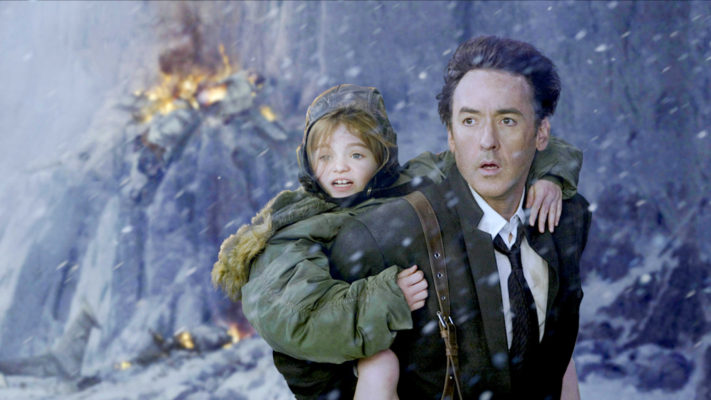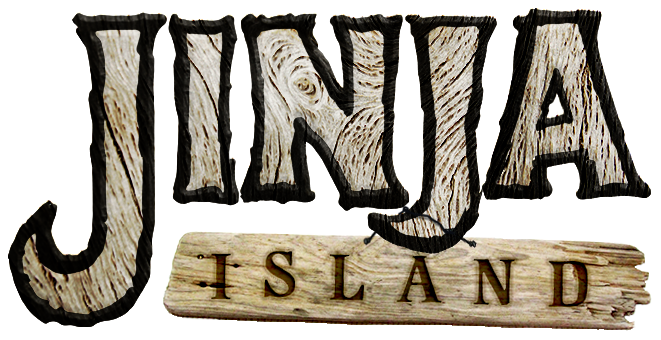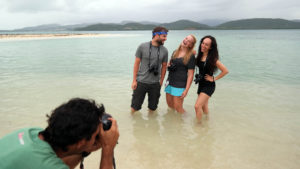Tuesday 8th – Wednesday 9th April 2014
After a few days of sleeping on buses, border controls, passport stamps and terrible food, Casey and I arrived in the wonderfully ramshackle town of Punta Gorda in Belize.

I had wanted to stop at the Garifuna village of Livingston along the way and see if my old friend Wallander from The Odyssey Expedition was still knocking around, but we were late getting this show on the road, so we had to buzz past on our epic speedboat ride up the coast.
Punta Gorda was my one and only stop in Belize during The Odyssey Expedition – something I hoped to make up for on this trip. We stayed at the rather pleasant Nature’s Way Guest House. Along the way we passed a bunch of rather jovial US migrants drinking at a local bar – they invited us to join them, so we did. And that’s where we met the indomitable Jerry L Shaver, distributor of hilarious business cards.


Later, as night fell, we headed south along the coast road until we found Asha’s Kitchen – a soul-food joint recommended to us by Jerry and his chums.

Now we’re talkin’!!

While we were eating, a HUGE storm broke. Wowsers it knows how to storm in The Caribbean.
After dinner Asha, the owner, gave us a lift back to our guest house in his car so we wouldn’t get soaked. Seriously starting to love love love Belize.
In the morning we’d be off to see the first site of the Ruta Maya: Lubaantun.
Mayan Site #1: Lubaantun
Take it away Wikipedia…!!
Lubaantun (also Lubaantún or Lubaantán in Spanish) is a pre-Columbian ruined city of the Maya civilization in southern Belize. One of the most distinguishing features of Lubaantun is the large collection of miniature ceramic objects found on site; these detailed constructs are thought to have been charmstones or ritual-accompanying accoutrements.
The city dates from the Maya Classic era, flourishing from the AD 730s to the 890s, and seems to have been completely abandoned soon after. The architecture is somewhat unusual from typical Classical central lowlands Maya sites. Lubaantun’s structures are mostly built of large stone blocks laid with no mortar, primarily black slate rather than the limestone typical of the region.
Corners of the step-pyramids are usually rounded, and lack stone structures atop the pyramids; presumably some had structures of perishable materials in ancient times.
The next expedition was led by R. E. Merwin of Harvard University’s Peabody Museum in 1915 who cleared the site of vegetation, made a more detailed map, took measurements and photographs, and made minor excavations. Of note Merwin discovered one of the site’s three courts for playing the Mesoamerican ballgame, which had stone markers with hieroglyphic texts and depictions of the ballgame.
In 1924 Gann revisited the ruins, and then led adventurer F.A. Mitchell-Hedges to the site. In his typically sensationalistic fashion, Mitchell-Hedges published an article in the Illustrated London News claiming to have “discovered” the site.

But there is no evidence that Anna was ever in Belize, and if the skull actually had been excavated at Lubaantun it would be hard to explain why none of the official reports mention it, why other expedition members deny that it was found there, and why the publicity-loving Mitchell-Hedges did not publish even a single mention of the skull before the 1950s. Possibly because it’s utter bollocks??
More importantly, it is clear from investigations by Joe Nickell and Norman Hammond that the skull was not found at Lubaantun at all, but was actually purchased by Mitchell-Hedges at a Sotheby’s auction in 1943. The skull had previously belonged to the collector Sydney Burney, and photographs of it had been published in the journal Man as early as 1936.
So the crystal skull thing turned out to be a big hoax. A bit like the Mayans predicting the end of the world on 21 December 2012. Which didn’t happen. Of course. The Mayans never thought it would. STOP BEING SILLY.

That didn’t stop George Lucas from making the travesty that was Indiana Jones and the Kingdom of the Crystal Skull. This was a man who also thought the Mayans lived in Southern Peru, four thousand kilometres south of here. That’s as far as Timbuktu is from London.

The British Museum sponsored investigations and excavations at Lubaantun under T.A. Joyce in 1926 and 1927, establishing the mid to late Classic period chronology of the site. Many of the artefacts from this expedition can be found in the British Museum’s collection.

After this Lubaantun was pretty much neglected by archaeologists (and suffered some looting by treasure hunters) until 1970, when a joint British Museum, Harvard, and Cambridge University project was begun led by archaeologist Norman Hammond, not to be confused with John Hammond, that was dinosaurs.

That night Casey and I returned to Asha’s soul food place and once again stuffed our faces with the yummiest food this side of Mexico. The next day it would be up an’ atom for the long school bus ride to Orange Walk in the north of the country.

















